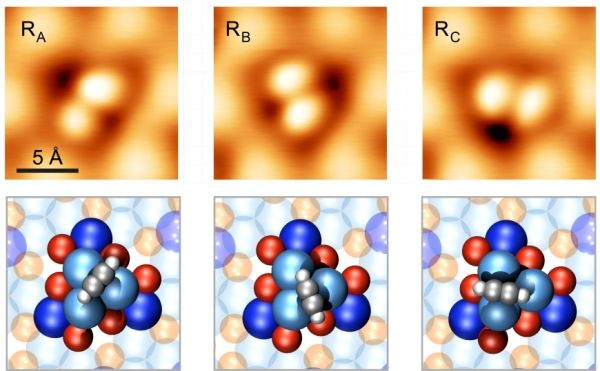The smallest motor in the world - consisting of just 16 atoms: this was developed by a team of researchers from Empa and EPFL. "This brings us close to the ultimate size limit for molecular motors," explains Oliver Gröning, head of the Functional Surfaces Research Group at Empa. The motor measures less than one nanometer - in other words it is around 100,000 times smaller than the diameter of a human hair.
In principle, a molecular machine functions in a similar way to its counterpart in the macro world: it converts energy into a directed movement. Such molecular motors also exist in nature - for example in the form of myosins. Myosins are motor proteins that play an important role in living organisms in the contraction of muscles and the transport of other molecules between cells.
Energy harvesting on the nanoscale
Like a large-scale motor, the 16 atom motor consists of a stator and a rotor, i.e. a fixed and a moving part. The rotor rotates on the surface of the stator (see picture). It can take up six different positions. "For a motor to actually do useful work, it is essential that the stator allows the rotor to move in only one direction," explains Gröning.
Read more at Swiss Federal Laboratories For Materials Science And Technology (EMPA)
Image: Scanning Tunneling Microscopy image (magnification about 50-million) of a PdGa surface with six dumbbell shaped acetylene-rotor molecules in different rotation states. The to-scale atomic structure of stator (blue-red) and the acetylene-rotor (grey-white in the slightly left-tilted vertical orientation) are shown schematically on the right. CREDIT: EMPA


